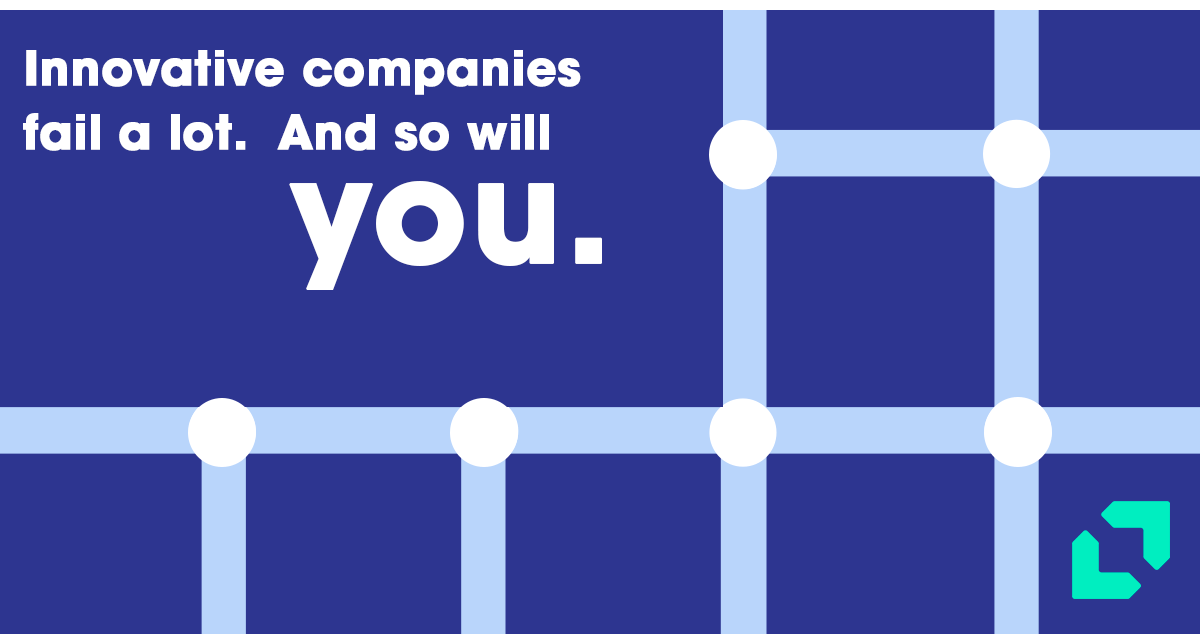Innovation is an innate process, not the pursuit of a single attractive idea.
We talk about “innovation” all the time – and often, the act of innovating is confused with the ability to be creative. Innovation, however, is identifying an unrealized need while being creative in delivering its solution. It changes a company’s ability to compete and enhances its target audience’s perspective of them in the marketplace.
Here’s the thing: The engine at the core of innovation isn’t any single creative idea – it’s process and practice, over and over again. You have to put in the foresight and work to build a continuous cycle of innovation processes. But this means nothing if you don’t also free your teams to work within a culture of innovation. Truly continuous innovation doesn’t just change what you and your teams do – it can change the core of how your organization thinks. And yet, most companies aren’t taking the right steps to make innovation an ingrained, repeatable facet of what they do. Not even close.
I think about 20% of companies who call themselves innovative truly are. The other 80% are chasing the real trailblazers in a race to catch up. Inspiration alone isn’t enough to warrant innovation. A lot of companies I’ve worked with get this wrong. As a business leader, you want a process that builds products or services that create a competitive advantage in the market – is repeatable for continual growth and measurable, so you prove success. Too many companies call themselves innovative without being innovative. They use the concept as a feel-good branding tool, not a process that they utilize internally to build products that matter.
Instagram is a perfect example of continuous innovation. The app we all know and love today isn’t the original intention of the product. It started life as Burbn, another check-in app. As the product rolled out, the founders discovered that people were using one feature of the product repeatedly — the photo upload. They learned from this and refocused their efforts to reinvent the app to focus on allowing photo sharing solely. And Instagram was born.
As you can see with Instagram, embracing this type of long-term, on-going learning is more crucial to innovation than “the big idea” you started with. To be a true pioneer in your industry, you need to actively build the processes to do the work. It’s not easy, but it’s worth it. At Appnovation, we show our clients and partners that there are three key steps to building reliable innovation processes that make relevant, game-changing ideas happen over and over again:
Start with need and value
Why do you want to make the things you’re making? If you can’t answer this quickly and concisely, you’re in trouble.
Discovering the purpose of innovation begins with identifying a core need. It's the catalyst that drives decision making based on what will create competitive advantage and value for your own brand.
Use a process that’s iterative, repeatable, and measurable
Perfection is the enemy of innovation.
Too many companies want to define a clear path to their goals from day one. In an obsession with analysis every action, they become paralyzed and never move forward with anything. Shift your thinking and be open to the notion that every problem can have multiple solutions. You can have multiple teams working on one priority. The act of iteration naturally builds a repeatable, measurable development approach to creating innovative products. Sky's the limit. In companies I’ve consulted with, we’ve had several teams begin to ideate independently and come up with dozens of potential solutions for the challenge they wanted to innovate against.
Create a culture that embraces failure
To innovate, you must fail.
The single greatest hurdle I see with companies becoming more innovative is their inability to accept failure. If your employees are afraid of failure, then your company will foster adversity to innovation. Simple as that. As a leader, it’s your job to make sure that doesn’t happen. I’m not a fan of “fail fast.” It’s a fine mantra, but it doesn’t capture the whole idea. Failure needs to be wholly adopted as part of every step of your process.
These tips are just the beginning. To dig deep into what it takes to become a truly innovative company, download the full program I use with our clients on how to use iterative innovation to grow their business.


